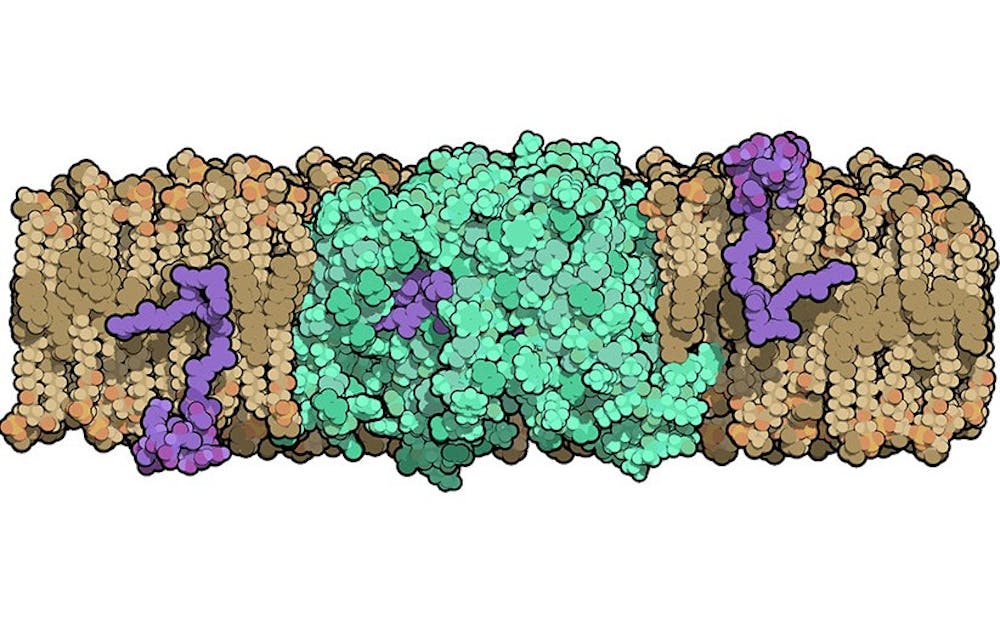With drug-resistant bacteria on the rise, a recently published study from Duke researchers offers insight into a protein that could be utilized in developing new antibiotics.
The group used X-ray crystallography to investigate the molecular structure of MurJ, a protein essential in building and protecting the cell wall in most types of bacteria. Although MurJ was discovered in 2014 to be responsible for the transport of "lipid II"—the molecule that makes up the cell well—across the bacterial membrane, the structure of the protein was largely unknown until this study. A deeper understanding of this protein could prove crucial for developing new antibiotics that can effectively penetrate bacterial cell walls.
The researchers’ next plans are to capture the protein in various states to see how it acts, explained senior author Seok-Yong Lee, associate professor of biochemistry, in an email.
“Importantly, if we can capture MurJ bound to its substrate lipid II, it will provide us an inroad to develop new antibiotics targeting MurJ,” Lee wrote.
Lee also noted that another group recently made a discovery that antibiotics that target lipid II are resistance-free. Bacterial resistance to a new class of antibiotics targeting MurJ could be slower to develop if an inhibitor for MurJ can interact as if it were lipid II.
However, the timeline for creating these antibiotics and bringing them to market may be long. Dr. Vance Fowler, professor of molecular genetics and microbiology and a principal investigator for the Antibacterial Resistance Leadership Group, wrote in an email that the discovery was an important accomplishment, but may not change much—especially with consideration to bacteria such as methicillin-resistant Staphylococcus aureus.
“Truth be told, we now have plenty of drugs for MRSA: three new anti-MRSA agents approved by FDA in 2014 alone. Identifying a new target by crystallizing MurJ is a huge deal, but we still have to identify a compound that can cross the Valley of Death from discovery to clinical trials,” Fowler wrote. “Best case, that’s a decade. And it’s never a best case. Never.”
Lee noted that it was unlikely that bacteria would become resistant to antibiotics based on MurJ before they are developed, since there would be no selection pressure on bacteria and thus no need to evolve. However, Lee also noted that how long it has taken for new antibiotics to come to market was worrying.
“My personal view is that this inefficiency of the new class of antibiotics is concerning,” Lee wrote. “More investments should be directed toward the development of novel antibiotics.”
The inefficiency of the process may be especially concerning as bacteria develop more resistance to antibiotics.
Last week, a Nevada woman died from an infection with a new superbug that was resistant to 26 available antibiotics. Dr. Alexander Kallen, a medical officer in the Centers for Disease Control and Prevention’s division of health care quality promotion, told PBS that this was a case of bacteria developing resistance at an alarming rate.
“I think it’s concerning. We have relied for so long on just newer and newer antibiotics. But obviously the bugs can often [develop resistance] faster than we can make new ones,” Kallen said in the article.
In light of this news, Fowler pointed toward another possible area of development for antibiotics. He noted that the woman died of untreatable Gram-negative bacteria, and consequentially the focus should be on that.
“We need development in Gram-negatives," Fowler wrote. "I have spent my career studying MRSA, so it hurts my Gram-positive heart to have to say this, but the drug development problem is no longer MRSA. The problem is the Gram-negatives."
The ARLG plans to lead several studies—facilitated by the Duke Clinical Research Institute—to investigate Gram-negative bacteria and agents, according to their website.
Despite possible setbacks in bringing a new class of antibiotics to market, Lee’s study highlights the importance of scientific discovery.
“Studying fundamental science is quite important,” Lee wrote. “It often provides a lot of unforeseen insights into drug development.”
Get The Chronicle straight to your inbox
Signup for our weekly newsletter. Cancel at any time.

